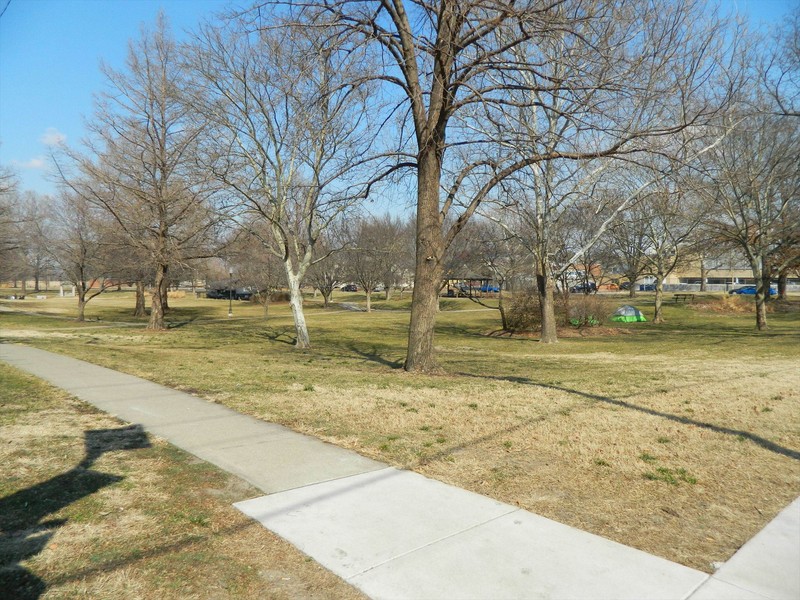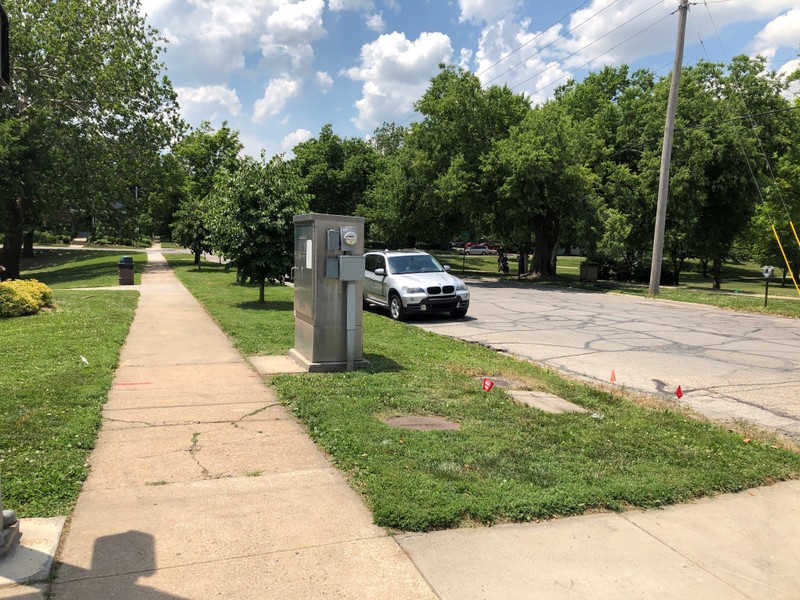The Ravine: A Refuge for Lawrencians
Introduction
Text-to-speech Audio
William Quantril served as a Confederate officer in charge of guerrilla-style troops that led a bloody and devastating raid on Lawrence in 1863; many survivors took refuge in a woody ravine in what is now Watson Park. The ravine in 1863 acted as a physical barrier that separated downtown from West Lawrence. It had steep banks and only one small bridge spanning it. While some of Quantrill's men rode along the edge of the ravine and shot into it, most others crossed the bridge into West Lawrence where they killed several of its prominent residents.
Images
Watson Park, where a ravine used as a hiding spot once existed during Quantrill's Raid.


Backstory and Context
Text-to-speech Audio
The Confederacy commissioned William Quantril to assemble a band of guerrilla soldiers in 1861, and two years later, they attacked an unsuspecting Lawrence, a hub of abolitionism in Kansas. The bushwhacker soldiers burned much of the town and killed nearly more than 150 males above the age of fifteen. Many who avoided death took refuge in a woody ravine in what is now Watson Park.
Lawrence enjoyed a reputation for being home to an abundance of anti-slavery activists. Locals routinely harbored fugitive and newly freed slaves. Moreover, Lawrence native James Lane (an eventual U.S. Senator) led regiments that burned and looted Osceola and other nearby Missouri communities. Thus, Quantrill targeted Lawrence. At 5 a.m. on August 21, 1863, Quantrill and his guerrilla soldiers stormed the town. They burned much of Lawrence to the ground and killed more than 150 (possibly as many as 190) men and teenage boys, roughly one-quarter of the male population older than fifteen. By the late morning, eighty-five women went from married to widows, and 250 children became fatherless.
Lane survived by hiding in a cornfield, but numerous others hid in a woody ravine where Watson Park now lays; the ravine separated Lawrence from West Lawrence. Although some of the bushwhackers shot into the ravine, its high banks and single bridge made it an effective spot to avoid gunfire. The Confederate troops chose instead to cross the bridge into West Lawrence to target many of the city's notable citizens.
Sources
Cheatham, Gary. "Desperate Characters: The Development and Impact of the Confederate Guerrillas in Kansas." Kansas History 14 (Autumn 1991): 144–162. https://www.kshs.org/publicat/history/1991autumn_cheatham.pdf.
Epps, Kristen. "Quantrill's Raid on Lawrence" Civil War on the Western Border: The Missouri-Kansas Conflict, 1854-1865. The Kansas City Public Library. Accessed February 22, 2024. https://civilwaronthewesternborder.org/encyclopedia/quantrills-raid-lawrence.
Lawhorn, Chad. "150 years later, Quantrill's Raid remains personal." The Topeka Capital-Journal. cjonline.com. August 25, 2013. https://www.cjonline.com/story/news/politics/state/2013/08/26/150-years-later-quantrills-raid-remains-personal/16386989007/.
"Watson Park - Lawrence, Kansas." Waymarking.com. Accessed February 22, 2024. https://www.waymarking.com/waymarks/wm13XG7_Watson_Park_Lawrence_Kansas
https://www.waymarking.com/waymarks/wm13XG7_Watson_Park_Lawrence_Kansas
